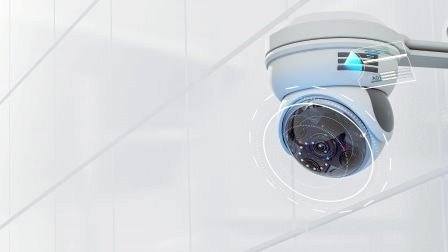

Printable PDF version
Subscribe to our newsletter
Growth of Timber Buildings
Construction Goes Techy
Markets Seek Direction
Construction
Management Specialists
San Francisco, CA
(415) 981-9430 (San Francisco office)
Orinda, CA
(415) 981-9430 (Orinda office)
Rocklin, CA
(415) 872-0996 (Sacramento office)
San Diego, CA
(858) 886-7373 (San Diego office)
Redmond, WA
(206) 571-0128 (Seattle office)
Los Altos, CA
(650) 386-1728 (South Bay office)
Los Angeles, CA
(424) 343-2652 (Los Angeles, CA office)
Wicklow, Ireland
+353 86-600-1352 (Europe office)
www.TBDconsultants.com
In this article we revisit the increasing popular construction method - Mass Timber Construction
The construction industry is frequently faulted for sticking with methods that have been around for centuries, or even millennia, but to be fair, we have been seeing new methods and technologies being introduced into both design and construction processes in recent years. Nevertheless, there remains a need to make the industry more attractive to the younger generations joining the workforce. The baby-boomers are fading away and the newer generations are more used to handling and enjoying the tech challenges, rather than having to do manual labor. Construction is also one of many industries needing to improve its carbon footprint, and that will involve technological innovation.
BIM and associated design and engineering software has certainly revolutionized the design, planning, and engineering of new and renovation work, improved productivity and efficiency, and allowed designers to test alternates through digital 3-D modeling capabilities. Its 4-D and 5-D capabilities (bringing in scheduling and costing) enable the design team to show that the proposed design can meet the owner's timeline and budgetary restraints. BIM is now incorporating 6-D (sustainability) and 7-D (facility management) information as well. With regulations, and even taxes, being enacted with regard to carbon emissions of buildings and the embodied carbon in the building materials, software enables owners, architects, and developers to have ready access to pertinent information about their buildings.

As the project moves into construction, there are innovative tools, materials, and processes that are improving the construction process, its ecological effects, and making the construction site a safer work environment. The adoption of modern software is helping to streamline the workflow, improve delivery time, and optimize the supply chain. These kinds of apps can also keep cashflow and financing organized, along with making and receiving digitized payments.
3-D printing has always been great for modeling a new construction project, but now the process has been adapted to enable it to build the finished product. Modularization and prefabrication are processes that have been around for decades, but the onsite workforce shortage and environmental concerns are bringing them to the fore again. They have the advantage of being less affected by weather and are less likely to involve onsite staff getting in each other's way and causing delays and claims.

There are always a lot of people, companies, and organizations involved in a construction project, so efficient communication is essential, and the pandemic made sure that we have those kinds of tools. The flexibility provided by modern project management apps is vital, since buildings tend to be one-offs, each with different design and construction teams. BIM and construction management software has been improving communication between parties, and has been leading to the standardizing of data, which is essential for providing the inputs that generative AI needs. Integration and communication between software solutions help everyone, and the ability to transfer data between apps has been improving. The newer mobile scanning techniques can produce a model of the building with similar accuracy to that obtained by using a traditional rod and tape but does it much faster. If you need finer detail, there's the terrestrial scanning (TLS) that has been around longer. Tracking progress, optimizing the schedule and resources, improving inventory management, and identifying problems, all in real time, has become possible. The advances in AI software will continue to improve the assessment of project risks and the identifying of potential alternates in designs, materials, delivery and supply chain options, etc.

The repetitive construction work, such as brick laying and the like, can be handled by autonomous construction equipment that can get their instructions from the BIM model, or at least the contractor's version of it (liability issues have to be considered here). Having AI monitoring site safety with image recognition of video data has the capability of identifying unsafe work practices and can lead to better training for site staff.
Automated electric vehicles can become robot assistants, moving materials, lifting heavy objects, and the like. Construction drones can provide digital/laser scanning (mapping job sites) leading to 3-D & 4-D models that identify conflicts and potential claims. Such drones also give remote monitoring in regard to safety issues, quality control, can inspect of dangerous places or damage from storms & natural disasters, etc. Better tracking should provide the data for better management that, in turn, should result in fewer cost and schedule overruns.
The advent of smart buildings and cities, with their IoT (Internet of Things) sensors, will be improving knowledge of maintenance issues and leading to preventive maintenance measures that keep buildings safer and functioning efficiently.

There are some stumbling blocks related to all this new technology, apart from it giving more things for Murphy's Law (anything that can go wrong, will) to work on. One problem is that generative AI needs lots of training data, which is probably more than any single building owner or construction company would have. We have to wonder if companies be willing to share such information when the emphasis seems to be on securing the data. There is also the problem of overcoming the "We've always done it this way" attitude. Showing the return on investment for the new technology will hopefully assist there, and there's an app to do that.
With inflation stubbornly refusing to go down fast enough and keeping interest rates high while the market remains strong, we try to ascertain what it all means for construction.
Design consultant: Katie Levine of Vallance, Inc.